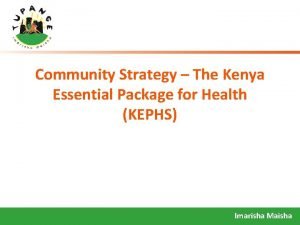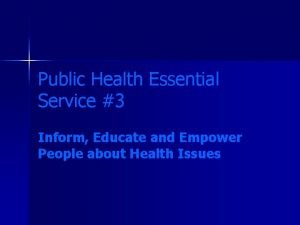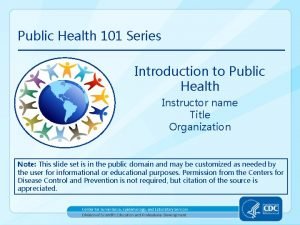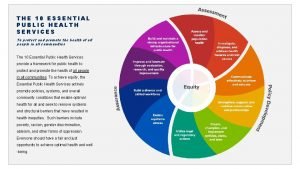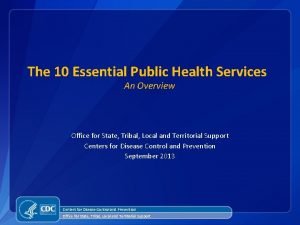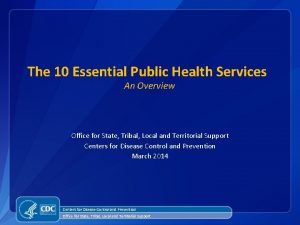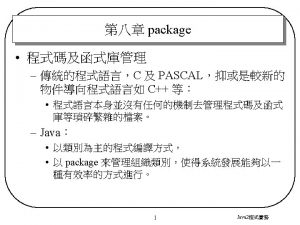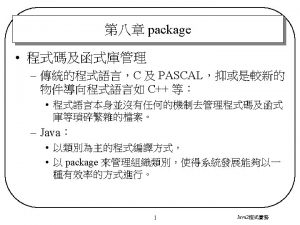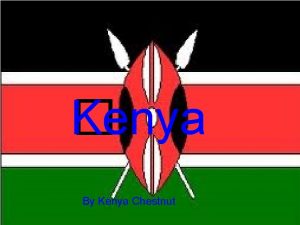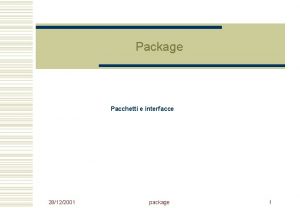Community Strategy The Kenya Essential Package for Health










- Slides: 10

Community Strategy – The Kenya Essential Package for Health (KEPHS) Imarisha Maisha

Community Strategy Rationale § The Kenya Essential Package for Health (KEPH) is the new approach through which the goals of the National Health Sector Strategic Plan (NHSSP II) will be accomplished. § Realizing the importance of empowering households and communities in the delivery of the KEPH at level 1, the Ministry of Health and sector partners developed and launched a Community Strategy in 2006. § The strategy outlined the type of services to be provided at level 1, the type of human resources required to deliver and support level 1 services, the minimum commodity kits required, and the management arrangements to be used.

Why Community Health § The community based approach is the mechanism through which households and communities strengthen their role in health and health-related development by increasing their knowledge, skills and participation. § The intention is to strengthen the capacity of communities to assess, analyse, plan, implement and manage health and health-related development initiatives so that they can contribute effectively to the country’s socioeconomic development.

How does it work § The Community Strategy spells out the linkage structures at district, divisional, health facility and community levels that are expected to provide citizens with sufficient representation and voice in all issues affecting service provision at level 1. § The health facility in-charges (supported by the district health management team –DHMT), community health extension workers (CHEWs), community health workers (CHWs), village elders and chiefs, and other extension workers are the sinews that bind these structures and enable sustained community leadership in addressing health problems, through the formation of linkage committees at all these levels

Objectives of the community strategy The Community Strategy intends to improve the health status of Kenyan communities through the initiation and implementation of life-cycle focused health actions at level 1. Its objectives are to: § Establish community health service linkage structures through effective decentralization and partnership for the implementation. § Launch and manage the Community Strategy. § Build the capacity of the community health extension workers (CHEWs) and community health workers (CHWs) to provide services at level 1. § Establish a communication strategy that effectively improves health seeking behavior. § Establish mechanisms for evidence-based dialogue informed by community and facility based information systems

Services offered at level one § Disease prevention and control to reduce morbidity, disability and mortality § Family health services to expand family planning, maternal, child and youth Services § Hygiene and environmental sanitation § Health promotion through educating the communities § Referrals to the health facilities for better management

Actors at level one § Households § Community –structured committee § Community Own Resource Persons including CHWs, opinion leaders and other structures (women groups, youth groups etc) § Community Health Extension workers § Health facility i/c § They are linked to catchments of health facility

Roles of the CHEWS under Tupange § Oversee CHWs and the Level one service implementation according to guidelines § Training of CHWs in family planning § Support CHWs in distribution of contraceptives and educating the communities § Compiling reports § Receiving and communicating feedback from L 2 and L 3 § Follow-up on action plans § Facilitating establishment of CBHI system and indicators

Roles of CHWs under Tupange § CHWs to be identified by the communities as outlined in the community strategy § Each CHW to be attached to a health facility within the catchment area § CHWs to be trained by Tupange in all the six modules and FP as the technical area § CHWs to be able to promote, refer clients for LAPM , offer pills, LAM, SDM and condoms to community members § Complete the registers for contraceptive distribution § Attend the monthly feedback meetings where their supplies are replenished

Important to note § Each CHW must be linked to the constituent health facility § Effective referral is dependent on effective linkage § Effective referral is necessary for continuum of care and uptake of LAPM § Community health work needs the facility to be effective § The primary actors are the households § Community participation is key to sustainable FP promotion and health improvement
 Kenya essential package for health
Kenya essential package for health Emerging trends in community development
Emerging trends in community development Characteristics of lipids
Characteristics of lipids Role of occupational health nurse
Role of occupational health nurse Core functions and essential services of public health
Core functions and essential services of public health Core functions and essential services of public health
Core functions and essential services of public health Mental health essential questions
Mental health essential questions Essential questions about mental health
Essential questions about mental health 10 essential public health services
10 essential public health services 10 essential public health services
10 essential public health services 10 essential public health services
10 essential public health services
